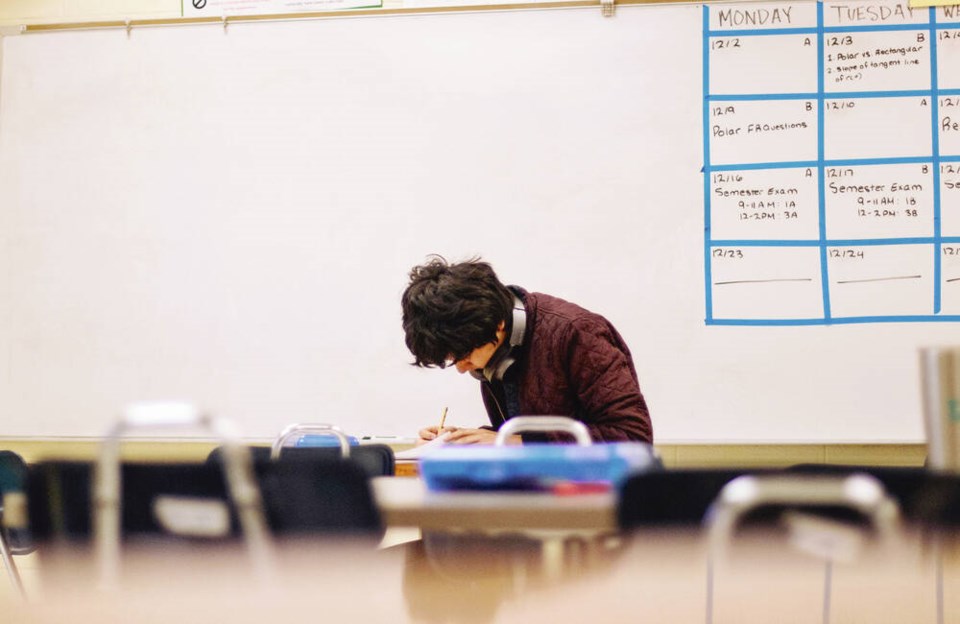PISA, the Program for International Student Assessment, measures 15-year-old students’ reading, mathematics and science literacy in 80 countries’ education systems.
An in-depth analysis of PISA results authored by Geoff Masters, head of the Australian Council for Educational Research, examined what school systems that have performed well above average on PISA have in common, and focuses on British Columbia, Estonia, Finland, Hong Kong and South Korea.
Masters’ report, entitled “Building a World Class Learning System,” is based on input from academics and recognized education leaders from these five high-performing jurisdictions.
Masters identifies common characteristics and practices in these school systems, including the significance of middle-level authorities (like school boards and individual schools themselves) being given greater responsibility for educational decision-making.
This local decision-making occurs under the umbrella of state or national jurisdiction-wide alignment around goals, priorities and standards.
However, Masters also says that “although these jurisdictions perform well above the OECD average and continue to be among the highest performers in the world, some have seen a significant decline in performance over time.”
Masters’ analysis identifies several explanations that have been advanced for the decline in some school systems.
These include changes over a 20-year period in what is valued and taught in schools, the changing nature of the student population, the evolution of the capabilities of teachers and the emergence of social divides that leave some students alienated from education.
Masters also says that “it is sometimes argued that the ability to read and apply mathematical concepts have been replaced by an emphasis on competencies such as problem-solving, critical thinking, creative thinking and collaboration.”
To date, limited work has been done on the conceptualization of many of these competencies and attributes, including on understanding and describing the nature of student growth in these areas.
The challenge, he argues, is to understand how effectively schools and school systems are developing these newly prioritized competencies and attributes — in other words, what is required is a set of “new metrics” to measure performance on what until now have sometimes been regarded as “soft” competencies.
In any case, writes Masters, the ability to read and to apply mathematical concepts remains foundational to almost all areas of learning and to effective functioning in the workplace and adult life.
A level of scientific literacy remains necessary to make informed choices in areas such as personal health and well-being, the protection of the environment, and sustainable ways of living.
Masters also argues that some decline in individual student performance over the past 20 years or so may be because the values and priorities of today’s 15-year-olds have changed to a point where kids now live in a “more connected, but also more ‘siloed’ world enabled by advances in technology and the growth of social media.”
Thirdly, Masters points to a decline in the number of teachers highly trained in the subjects they teach, which, in turn, leads to teachers teaching outside their own areas of academic expertise.
There is more: Masters’ analysis of PISA results in the higher-performing school systems examines the reforms these jurisdictions have been making to their teaching and learning systems. These reforms, he says, are representative of “new ways of thinking about learners and about learning itself.”
As one example, he points to the movement away from the use of IQ tests as a way of establishing an individual student’s capacity to learn.
In the higher-performing systems, “learning systems are being built on a different understanding of capacity to learn,” meaning that given well-targeted support and sufficient time, every student is capable of eventually achieving success.
This has significant implications for the evaluation of learning, which will require a shift away from measuring what students know to measuring what they can do with what they know.
Again, Masters found that in the higher-performing systems, student assessment is seen more as the process of establishing at what point students are in their studies as part of a process of identifying the next steps in their individual learning.
Beyond that and at a systemic level, Masters found that in the jurisdictions studied, organizations and interest groups outside the school systems “are an important part of the ‘education ecosystem’ and often make significant contributions to the work of schools.”
This results in stronger community confidence in the schools and the work of teachers, who encourage students to see learning as “life-wide.”
Such teachers actively promote “experiential” learning in non-school settings, with emerging technologies providing more flexibility in when and where students learn.
Geoff Johnson is a former superintendent of schools.




